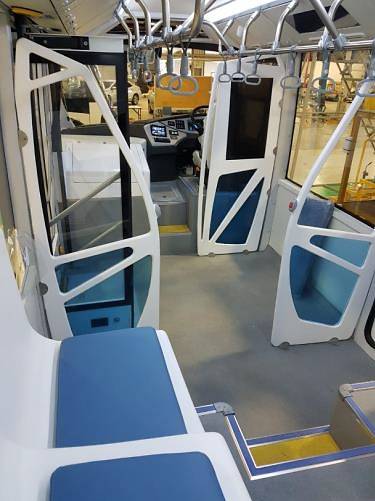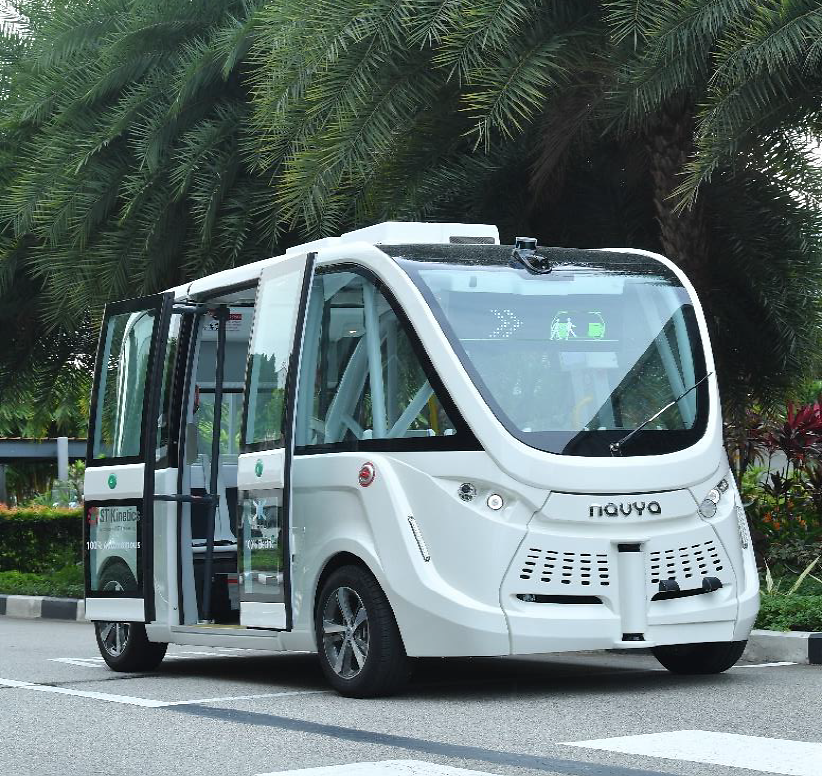SINGAPORE: Roaming peacocks, meandering tourists and curbside bushes were all causing headaches this week for operators of one of the first autonomous bus shuttle services to hit public roads in Singapore.
Passengers found themselves almost outnumbered by bus stewards checking their seat belts were tightly fastened as ST Engineering began testing four vehicles in Sentosa.
The autonomous vehicles – comprising two minibuses and two smaller shuttles plied popular destinations along a 5.7km route, including Siloso Point, Beach Station, Palawan Beach, Tanjong Beach and Sentosa Golf Club.

Singapore’s first on-demand autonomous shuttle public trial will run from Aug 26 to Nov 15. (Photo: MOT, SDC, ST Engineering)
Singapore, ranked second behind the United States in its preparedness for wide-scale driverless transport in a recent KPMG report, plans to deploy autonomous buses in three districts of the island from 2022.
The latest trial, due to run until Nov 15, is being closely watched by tech firms and automakers around the world. It was launched last Tuesday following more than a year of testing.
“Public safety is our top priority,” Singapore’s transport ministry said in a joint statement with ST Engineering.
Tan Nai Kwan, chief robotics engineer at ST Engineering’s Land Systems arm, said the test was “nerve-wracking”, but stressed the safety precautions taken.
Those included a human driver hovering over the self-rotating steering wheel, ready to snatch back control in an instant.
Each shuttle also has a vehicle fault system that will immediately alert the safety driver of any faults, and cede control of the vehicle to him.
The vehicles come equipped with various technologies to help them sense their environment and identify appropriate navigation paths, obstacles and signs, it was previously reported. This helps them navigate traffic as well as handle a range of complex environments, such as roundabouts, the release said.
Singapore’s first on-demand autonomous shuttle public trial will run from Aug 26 to Nov 15. (Photo: Jeraldine Yap)

Four autonomous vehicles (AVs), comprising two minibuses and two smaller shuttles, will be deployed for the trial. (Photo: MOT, SDC, ST Engineering)
On the first day of the trial on Monday, roadside bushes lightly buffeted by the wind and wandering beachgoers were enough to trigger the bus’ many sensors, bringing it to a juddering halt as it trundled along quiet roads.
Tan said the most “dangerous beasties” encountered so far were the roaming peacocks which fly unexpectedly into the road.
The service is free and will operate for four hours on weekdays, from 10am to 12pm and from 2pm to 4pm. The shuttle buses will not be available during weekends and public holidays.
A similar test is underway on roads around the National University of Singapore’s Kent Ridge campus. Tan said with advances in technology, the plan is for safety drivers to eventually retreat to remote control centres although he did not put a time frame on that happening.
In 2016, a self-driving car being tested in Singapore collided with a truck as it was changing lanes. The were no injuries but similar accidents in the US have been fatal.
READ: Self-driving Uber car kills Arizona woman crossing street
Still, the few intrepid tourists who managed to navigate the on-demand service on the trial’s first day in Singapore did not seem fazed by their robotic navigator.
“It’s pretty cool but at the same time it feels similar to a normal bus,” said Stephen Byrne, a 20-year old student from Ireland. “I suppose that is a good thing, it’s not too much of a shock. It’s probably safer than being in some human’s hands.”




